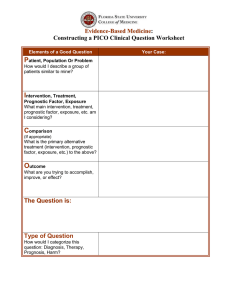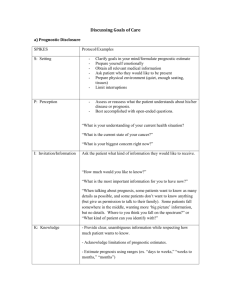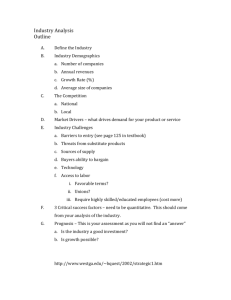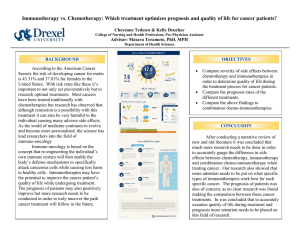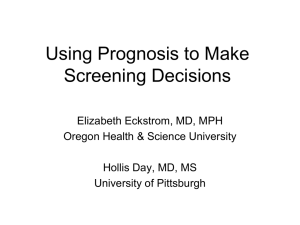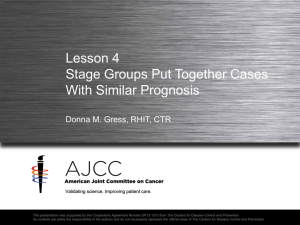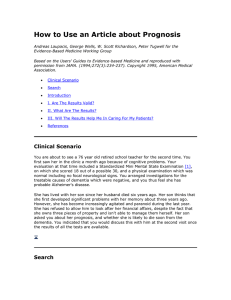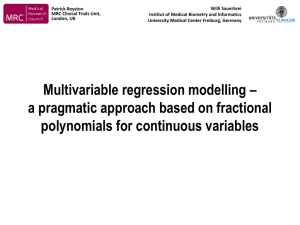Prognosis Worksheet
advertisement
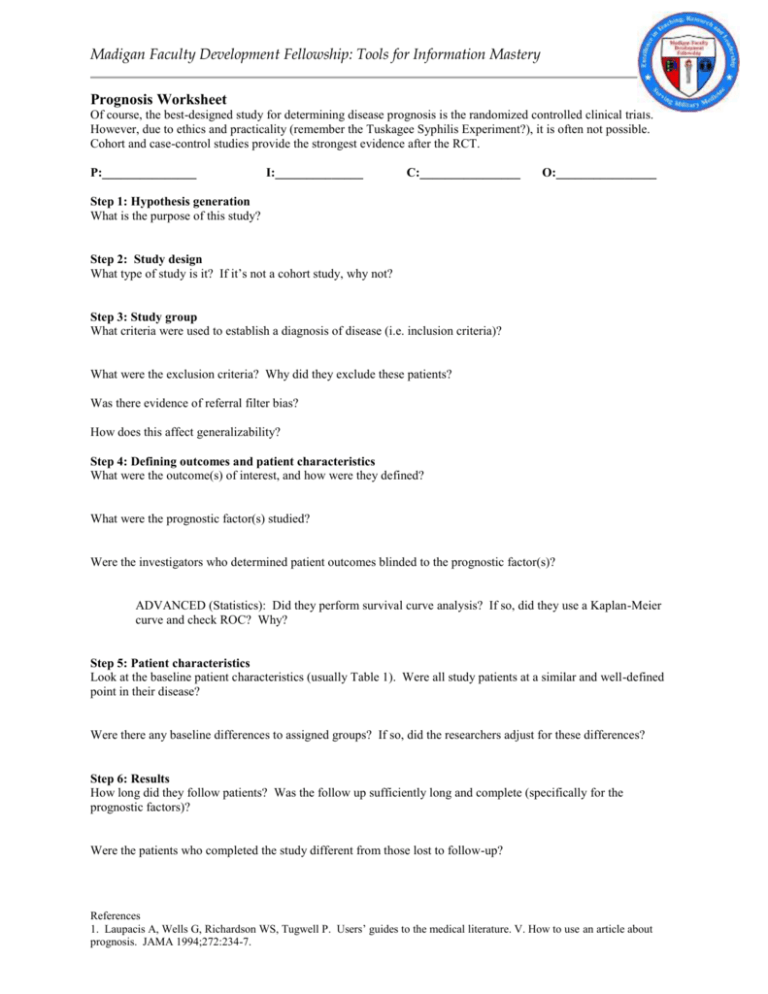
Madigan Faculty Development Fellowship: Tools for Information Mastery Prognosis Worksheet Of course, the best-designed study for determining disease prognosis is the randomized controlled clinical trials. However, due to ethics and practicality (remember the Tuskagee Syphilis Experiment?), it is often not possible. Cohort and case-control studies provide the strongest evidence after the RCT. P:_______________ I:______________ C:________________ O:________________ Step 1: Hypothesis generation What is the purpose of this study? Step 2: Study design What type of study is it? If it’s not a cohort study, why not? Step 3: Study group What criteria were used to establish a diagnosis of disease (i.e. inclusion criteria)? What were the exclusion criteria? Why did they exclude these patients? Was there evidence of referral filter bias? How does this affect generalizability? Step 4: Defining outcomes and patient characteristics What were the outcome(s) of interest, and how were they defined? What were the prognostic factor(s) studied? Were the investigators who determined patient outcomes blinded to the prognostic factor(s)? ADVANCED (Statistics): Did they perform survival curve analysis? If so, did they use a Kaplan-Meier curve and check ROC? Why? Step 5: Patient characteristics Look at the baseline patient characteristics (usually Table 1). Were all study patients at a similar and well-defined point in their disease? Were there any baseline differences to assigned groups? If so, did the researchers adjust for these differences? Step 6: Results How long did they follow patients? Was the follow up sufficiently long and complete (specifically for the prognostic factors)? Were the patients who completed the study different from those lost to follow-up? References 1. Laupacis A, Wells G, Richardson WS, Tugwell P. Users’ guides to the medical literature. V. How to use an article about prognosis. JAMA 1994;272:234-7. Madigan Faculty Development Fellowship: Tools for Information Mastery What’s the likelihood of the outcome(s) in a specified period of time? How did they measure likelihood of outcome event (RR, OR, descriptive rate, etc)? What’s the risk associated with each prognostic factor? (Relative risk, odds ratio) Look at the Confidence Intervals for the Relative Risks/Odds Ratio. Do any of them cross 1.00? What does this mean? Did the investigators report a survival curve analysis? How do you interpret the curve? Step 7: Discussion of Study Is this study valid? (Look at Steps 1-5; also see the Prognosis JAMA Worksheet) Is this study generalizable to our patient population? Will this affect your clinical practice? Will these results lead directly to selecting or avoiding therapy? Are the results useful for counseling or reassuring patients or family members? For further study, for those interested in research… During the initial reading, imagine you are the researchers doing the study and see if you would approach it the same way. Then, after reviewing the article, do an after-action-review and see if you would do anything different knowing the results. References 1. Laupacis A, Wells G, Richardson WS, Tugwell P. Users’ guides to the medical literature. V. How to use an article about prognosis. JAMA 1994;272:234-7.
